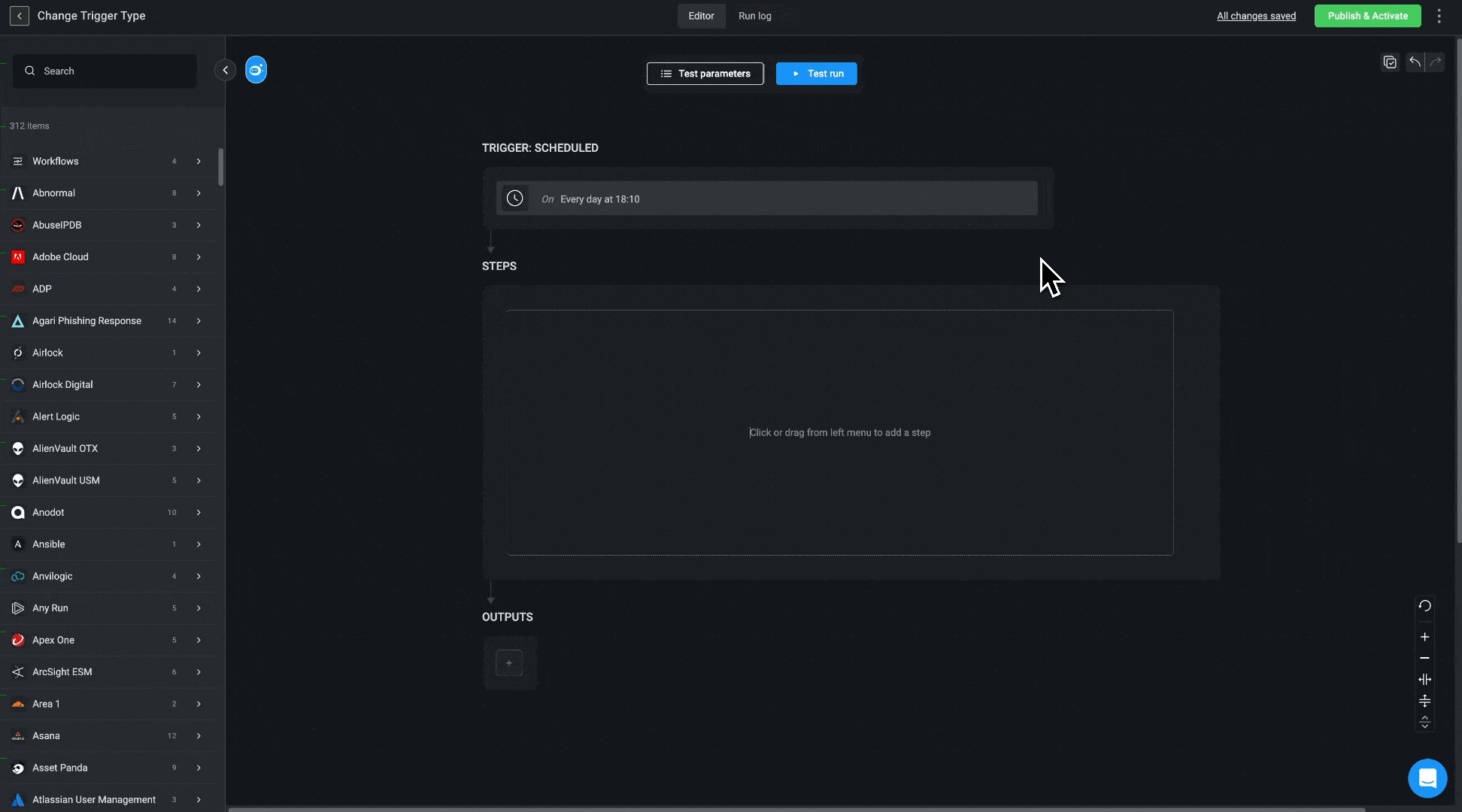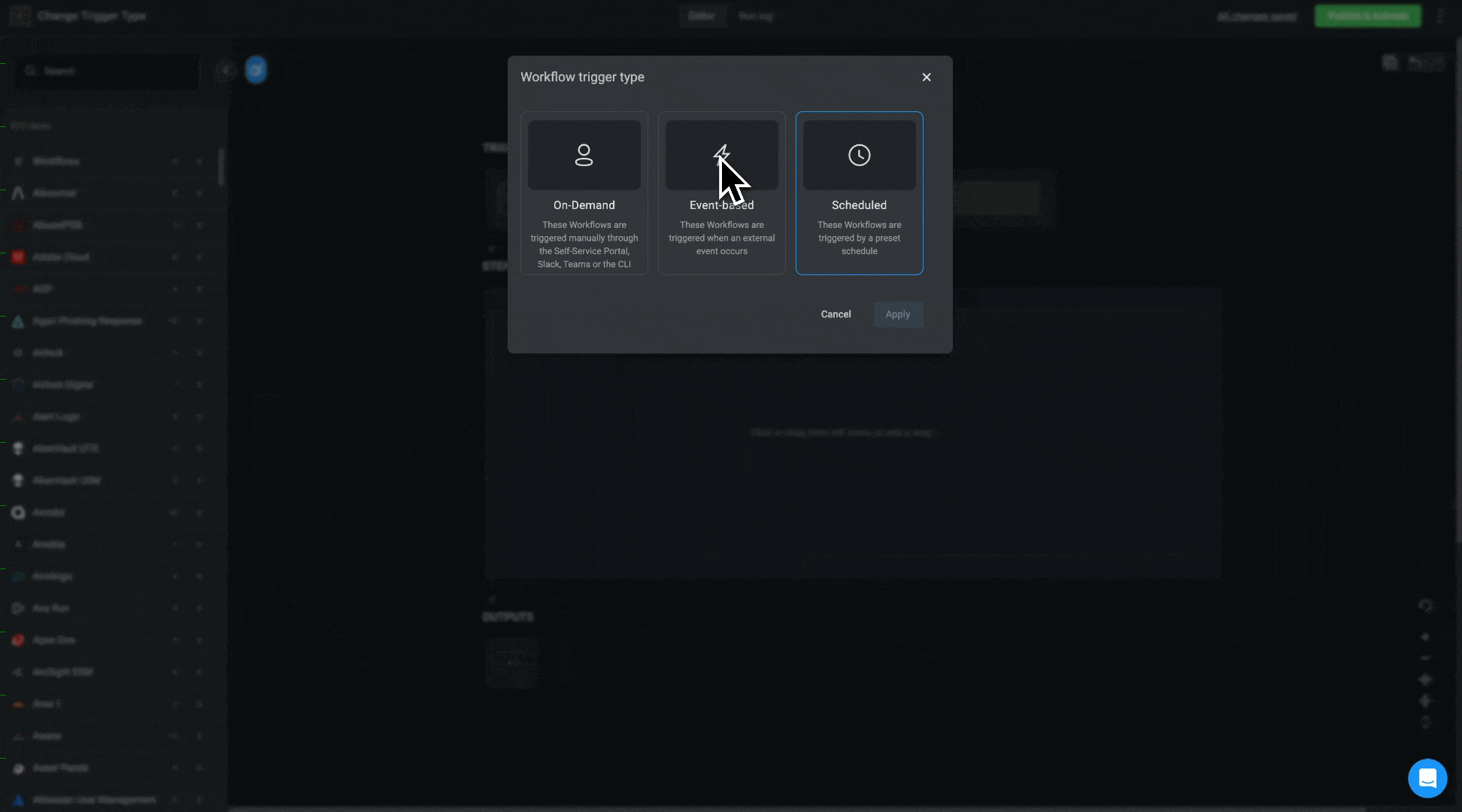To learn more details about trigger types, see Workflow Triggers. For help configuring your triggers, see the trigger-type documentation: on-demand, event-based, or scheduled.
Choose or Change the Trigger Type
A workflow needs a configured trigger to be published. When creating a new workflow, either with Builder Copilot or manually via the Workflow Editor, the trigger type is set during the process. Once you’ve chosen the type, it’s time to configure the trigger based on the type that you selected.For more information, see Creating a New Workflow.
- Navigate to Workflows in the Blink console. The Workflows page opens.
- From the Editor, locate and click the relevant pack and then click the relevant workflow to open it in the canvas. The canvas opens with the workflow configuration.
-
Hover over the current trigger and click the 3-dot menu.
A selection panel appears, showing different trigger options, similar to the following image:

-
Click Change Trigger Type to open the trigger selection window.
A pop-up opens, displaying available trigger types.

-
Select the appropriate trigger type:
Blink supports these trigger types:
Trigger Type Description On-demand triggers Manually executed by a user from the Self-Service Portal, Slack, Teams, or CLI. Event-based triggers Automatically initiated in response to an external event, such as a webhook or system update. Scheduled triggers Runs at time intervals based on configurations, such as hourly, daily, or custom schedules. - Click Apply. The selected trigger is now applied to the workflow, and all previous configurations are removed. Now, configure the trigger based on the type that you selected.